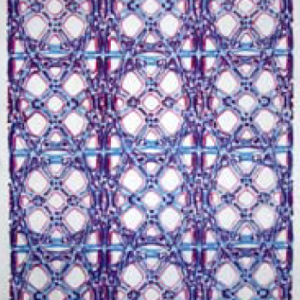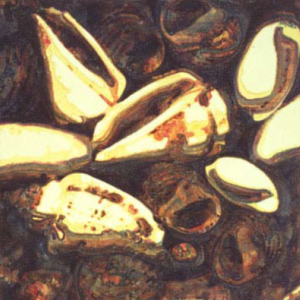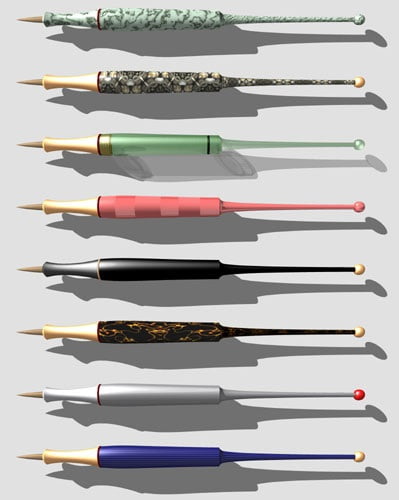The fountain brush was made to work with a large old A0 plotter.
I made oil paintings on canvas with them as well as and ink in silk drawings.
In cooperation with Pieter Bijwaard a dozins of paintings were made.
Half bij the machine, half bij Pieter, sharing the same materials.
A great project and quite a reliability test.
The brush went never in production

Pattern
Ink on silk

Shells
Oil on canvas

Pattern
Ink on silk
How it works
The fountain brush is based upon simple physics.
The size of the bundle hair changes according to the amount of liquid it absorbed.
A dry brush is fluffy; noting keeps the hairs together. (Fig.1)
A brush that is just dipped in liquid has a slightly wider bundle hair than an empty
brush. (Fig.2 and fig.3)
A brush submerged in liquid, behaves somewhat like the fluffy brush. (Fig.4)
The hairs of the fountain brush are partly enclosed by a narrow sleeve. The liquid is
allowed to run freely to the hairs. There the liquid will find its way between the hairs
causing the bundle to extend and close of the intake of air. As the brush applies liquid,
the intake of air restarts. This way the hairs of the brush are used as an effective
airlock. (Fig.5)
The exchange of air and liquid depend on the amount of liquid applied.
The trick is based on the fact that the enclosed part of the hairs behaves as if they
were submerged.
The mayor advantages:
This technique applies the amount of liquid that the surface does absorb.
The fountain brush can dispense more liquid in shorter time; at least 10 times more
than a fountain pen.
This is the only known technique in were the hairs of a brush it self do the work.
It works with hairs of any other filament.
In order to work:
- The basis of the hairs must be well inside the sleeve
- Nothing may obstruct the free movement of the hairs inside the sleeve; especially
the width of the bundle should not be fixed.





